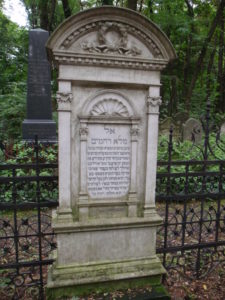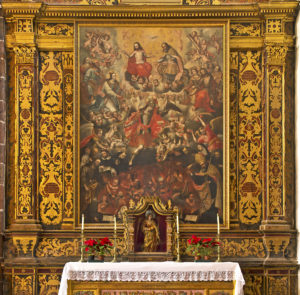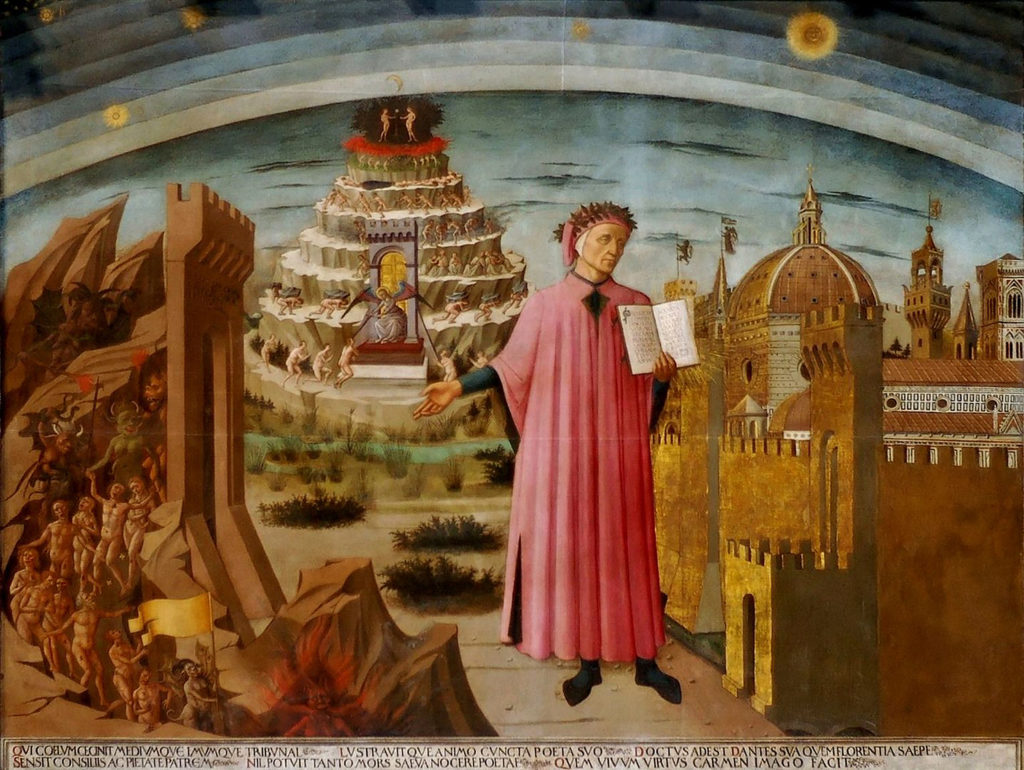He spoke as a patriot, proud of his countryman, and in his enthusiasm Riccardo Bruscagli made bold claims.
“The realm of Purgatory is really Dante’s invention — from a theological, moral, psychological, and even topographical point of view … Purgatory really was not a very well defined place before Dante got his hands on it.”
Bruscagli is emeritus professor of literature at the University of Florence, and he was speaking on camera in a four-hour documentary recently broadcast on PBS: “DANTE: Inferno to Paradise.”
Given time to draft a statement, he might have qualified or modified his claims. But the cameras were rolling, and Dante is a poet whose singularity invites exaggeration. Professor Bruscagli eagerly accepted the invitation.
His claim is forgivable, but historically false, and since it touches upon Christian doctrine — and was broadcast widely — it merits attention and the correction the professor himself might apply in a recollected moment.

Purgatory has always been part of biblical religion. Even before the rise of Christianity, it was implicit in the sacred texts and practices of the Jews.
Scholars identify purgatory with Sheol, the abode of the dead, which is mentioned more than 60 times in the Old Testament. Sheol is clearly not hell. It is populated by Israel’s heroes as well as its questionable characters. Job asks to be sent there for “a set time” until God’s “wrath be past” (Job 14:13). It is possible to be sent to Sheol “in sorrow” (Genesis 44:29). It is also possible to “go down to Sheol in peace” (1 Kings 2:6).
In Scripture, Sheol is imagined vaguely as a place underground, where disembodied souls persist as “shades” (Isaiah 14:9).
The condition of the dead in Sheol can be improved by the sacrificial prayers of the living. In the Second Book of Maccabees, written around a hundred years before the time of Christ, the general Judas Maccabeus learns after battle that some of the Jewish casualties had been found with superstitious amulets.
Intending to remedy the sin, he “took up a collection” from his living soldiers and “sent it to Jerusalem to provide for a sin offering.”
The chronicler of the battle then adds a personal judgment: “In doing this he acted very well and honorably, taking account of the resurrection. For if he were not expecting that those who had fallen would rise again, it would have been superfluous and foolish to pray for the dead. But if he was looking to the splendid reward that is laid up for those who fall asleep in godliness, it was a holy and pious thought. Therefore he made atonement for the dead, that they might be delivered from their sin” (2 Maccabees 12:43–45).
The Jewish practice of praying for the dead has endured through history and continues today in prayers such as El Malei Rachamim (Hebrew for “Merciful God”), which begs mercy for the departed soul and a “resting place … in the Garden of Eden.”

With the New Testament the fate of the dead becomes clearer. Sheol is shown to be an intermediate state between bodily life on earth and eternal life in heaven. It is temporary, for judgment and purification.
The Book of Revelation makes clear that “nothing unclean shall enter” heaven (21:27). Yet we know from St. Paul that “all have sinned and fall short of the glory of God” (Romans 3:23). How, then, will those who have sinned get through the gates?
Paul describes the process by which the souls of the dead are prepared for heaven. “Each man's work will become manifest; for the Day will disclose it, because it will be revealed with fire, and the fire will test what sort of work each one has done. If the work which any man has built on the foundation survives, he will receive a reward. If any man’s work is burned up, he will suffer loss, though he himself will be saved, but only as through fire” (1 Corinthians 3:13–15).
So there is a purification after death. Fire is the best metaphor Paul can find for the operation. It burns up what is useless and proves and preserves what is everlasting.
Jesus speaks of a forgiveness God extends “in the age to come” (Matthew 12:32), and Paul explains how God does it.
The devotional life of the early Church reflects this belief. Many of the Fathers refer to prayers for the dead and Masses for the dead. Tertullian, a North African Christian who lived in the late 100s, said it is the duty of every widow to pray for her deceased husband. “Indeed, she prays for his soul, and requests refreshment for him … and she offers her sacrifice on the anniversaries of his falling asleep.”
The doctrine continues in the writings of St. Perpetua, St. Cyprian, Clement of Alexandria, Origen, St. Ambrose, and especially St. Augustine, who observed that “this usage is clear of the whole Church … that in the prayers of the priest which are offered to the Lord God at his altar, the commendation of the dead has also its place.”
In the Roman catacombs, ancient graffiti and inscriptions beg prayers on behalf of the dead: “If any of the brethren reads this, let him ask that this holy and innocent soul may be received by God.”
St. Pope Gregory the Great, at the end of the sixth century, applied the word “purgatory” to the state of final purification after death and before entrance into heaven.
Like the word “Trinity,” it does not appear in the Bible, but it is implicit in both the Old Testament and the New and confirmed by the beliefs and practices of the early Church.
Gradually, the Church makes explicit what is implicit in Sacred Scripture. This is called the development of doctrine, and it was practiced by Christians from the beginning.
No, Dante did not invent purgatory in the 14th century. He did something better. In this matter as in many others, he gave deeply memorable imaginative expression to the constant doctrine of the Church.

